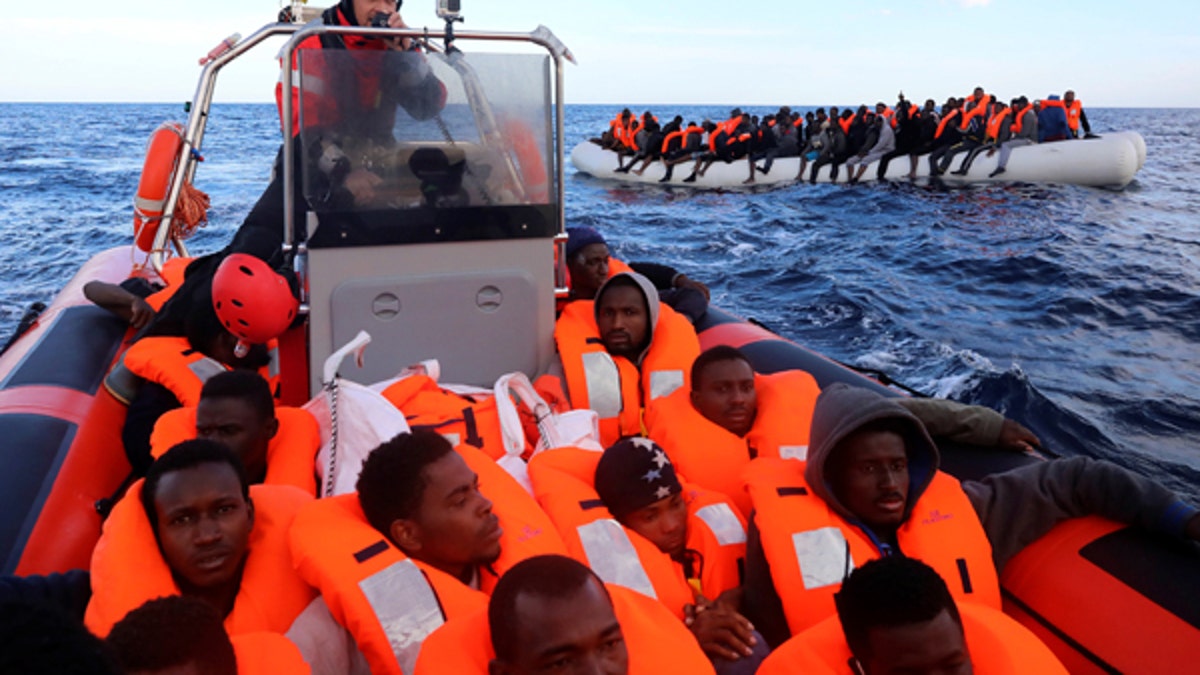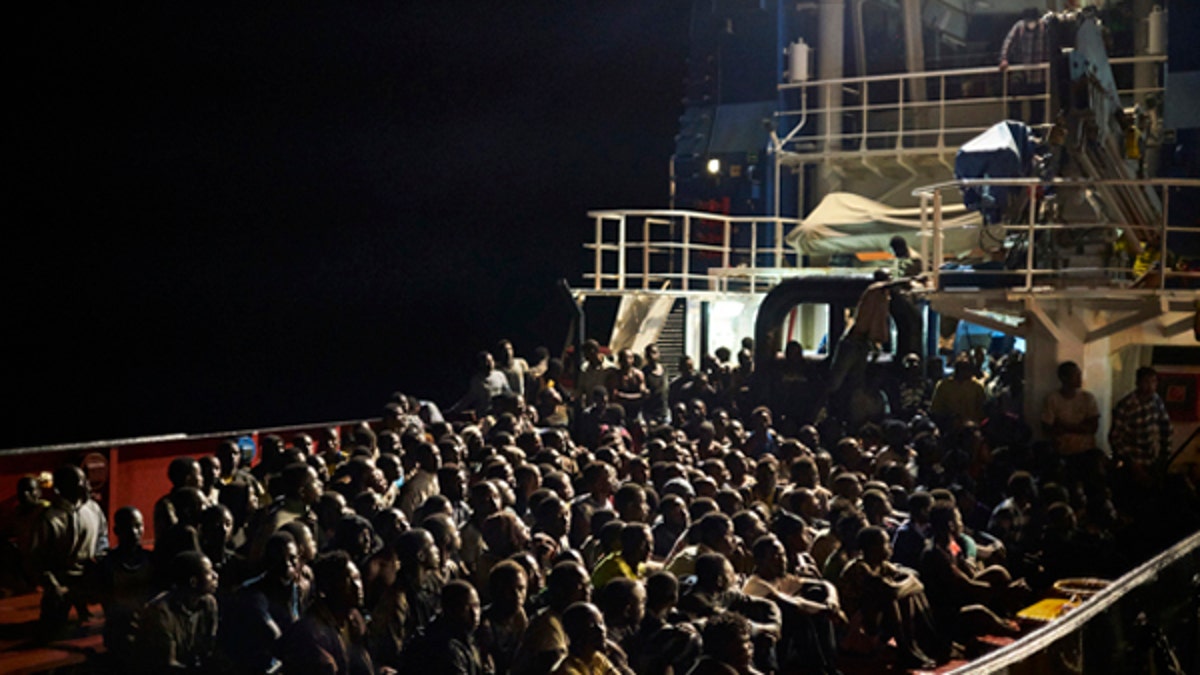
Sub-Saharan migrants are seen aboard an overcrowded raft as others are seen onboard a rescue boat, during a rescue operation by the Spanish NGO Proactiva Open Arms in the central Mediterranean Sea, 21 miles north of the coastal Libyan city of Sabratha. (REUTERS/Giorgos Moutafis)
A number of privately-run migrant rescue vessels ferrying refugees and migrants between Libya and Sicily has caught the attention of Italian authorities who suspect that some of the fleet’s funding may come from smugglers.
Carmelo Zuccaro, chief prosecutor of Catania, a city on the eastern coast of Sicily, formed a task force to determine whether some of the independent rescue operations may be working with regional smugglers. Catania’s port is where a majority of Libyan migrants and refugees are brought after being rescued from the Mediterranean Sea.
"Last summer we saw something we'd never seen before: At times there were 13 boats operated by NGOs working at once," Zuccaro recently said to Reuters.
Zuccaro added that the concerns of the court are based on how well funded the rescue operations are as well as migrant testimony.
The prosecutor also said in an interview with Agence France-Presse that it is not a criminal investigation and that NGO rescue boat operators are not automatically suspected of illegal activity. Rather, it is the elaborate operations of smaller operators that has drawn authorities’ attention.
"There is an abnormal proliferation of NGOs operating. I'm not talking about the big, prestigious organizations, but all the small ones that seem to have sophisticated hardware, such as drones," Zuccaro said to the news agency.

(mathieu willcocks)
"That's expensive, and we're just looking into who is financing them and why."
The first private rescue vessel was launched in the summer of 2014, and by last summer there were close to 10 NGOs taking part in rescue operations off the coast of Libya, many funded through private donations.
A recent EU report said that it’s possible that traffickers are putting migrants out to sea and colluding with private rescue vessels that recover them.
Officials for Doctors without Borders, which sponsors one of the vessels, said that the NGOs were "not the cause but a response" to a humanitarian crisis. The group also said it had been forced to act because Frontex, the EU’s border and coast guard agency, was failing to decrease the number of people crossing the Mediterranean. Most of last year’s deaths occurred on one specific route, from Libya to Italy.
The Migrant Offshore Aid Station (MOAS,) which launched the first private rescue vessel along the route, believes that the rise in deaths may be due to smugglers capitalizing on the crisis.
“[Our] research and analysis suggests that this change in approach might be both an attempt to maximize opportunity and meet demand on the part of the smugglers,” reads a statement from MOAS officials in December 2016.
“The smuggling networks appear to be industrializing, with increased competition representing a new challenge for them in procuring enough rubber boats, engines and fuel containers to meet the demand.”
The rescue organization charged that smugglers are cutting corners by packing unprecedented numbers of migrants and refugees, often in the hundreds, onto unseaworthy boats and dinghies.
"The combination of heavier loads and inferior quality is a recipe for disaster," MOAS Director of Operations Ian Ruggier said in the statement. “Rescue assets have had to deal with increased challenges. There is no doubt that the vessels are built to last a few miles to see people beyond Libyan territorial waters.”
